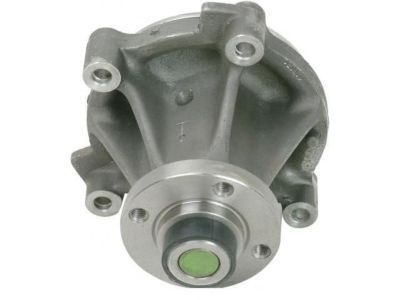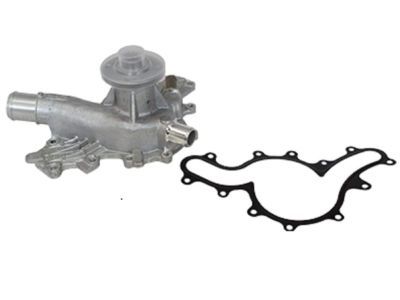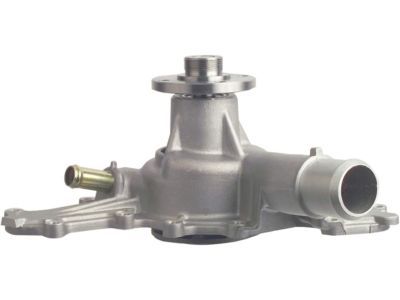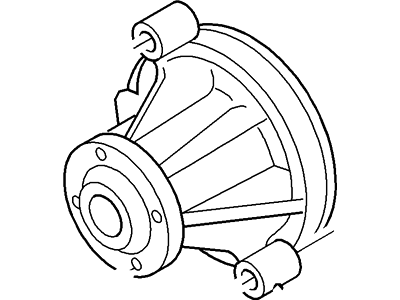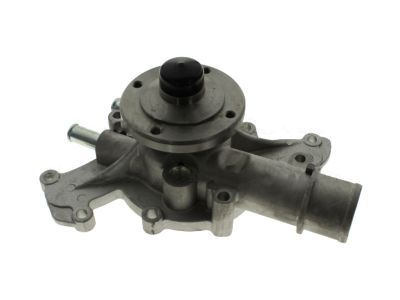

My Garage
My Account
Cart
Genuine Mercury Mountaineer Water Pump
H2O Pump- Select Vehicle by Model
- Select Vehicle by VIN
Select Vehicle by Model
orMake
Model
Year
Select Vehicle by VIN
For the most accurate results, select vehicle by your VIN (Vehicle Identification Number).
5 Water Pumps found
Mercury Mountaineer Pump Assembly - Water
Part Number: 5L2Z-8501-A$50.60 MSRP: $83.64You Save: $33.04 (40%)Ships in 1 Business DayMercury Mountaineer Pump Assembly - Water
Part Number: 6L2Z-8501-A$86.17 MSRP: $142.44You Save: $56.27 (40%)Mercury Mountaineer Pump Assembly - Water
Part Number: F77Z-8501-AD$89.31 MSRP: $142.44You Save: $53.13 (38%)Mercury Mountaineer Pump Assembly - Water
Part Number: 1L2Z-8501-BB$50.60 MSRP: $83.64You Save: $33.04 (40%)Ships in 1 Business Day
Mercury Mountaineer Water Pump
We provide a wide range of Mercury Mountaineer Water Pump at the best prices possible. If you need Mercury Mountaineer Water Pump, you can shop with confidence on our website. All our OEM parts come with a manufacturer's warranty and are delivered to your door step with a fast delivery service.
Mercury Mountaineer Water Pump Parts Questions & Experts Answers
- Q: What are the signs of a failure in the water pump on Mercury Mountaineer?A: Water pump failure can cause engine damage due to overheating. If the pump seal fails, coolant leaks from the front cover in V6 models or the water pump housing in V8 models. The water pump is located in the front cover for V6 engines and in a housing in the engine block for V8 engines. Water pumps have weep holes that can be checked for leaks with a flashlight. If there's heavy brown staining or visible coolant, the pump needs replacing. If the pump shaft bearings fail, a howling sound may be heard. Shaft wear can be felt by rocking the water pump pulley. Don't confuse drivebelt slippage, which causes a squealing sound, with pump bearing failure. A quick pump check is to turn on the heater; if the pump is failing, it won't circulate hot water efficiently.
- Q: How to remove and install a water pump on Mercury Mountaineer?A: Disconnect the cable from the negative battery terminal. Drain the cooling system. Remove the drive belt. Remove the Engine Cooling Fan. Remove the water pump pulley. When loosening the bolts, hold the pulley with a strap or chain wrench to prevent it from turning. For V6 models, remove the bypass hose, the heater hose, and the lower radiator hose from the water pump. Remove the bolts attaching the water pump to the engine block and remove the pump from the engine. If the water pump is stuck, gently tap it with a soft-faced hammer to break the seal. Clean the bolt threads and the threaded holes in the engine and remove the corrosion and sealant. Remove all traces of old gasket material from the sealing surfaces. For V8 models, remove the water pump mounting bolts. Clean the O-ring surfaces on the pump and the housing. If you're installing the old pump, install a new O-ring. Clean the bolt threads and the threaded holes in the engine and remove the corrosion and debris. Compare the new pump to the old one to make sure that they're identical. On V6 models, apply a thin film of RTV sealant to hold the new gasket in place during installation. Make sure that the gasket is correctly positioned on the water pump and the engine block surface is clean and free of old gasket material. Carefully mate the pump to the water pump housing. Install the water pump bolts and tighten them to the torque. Don't overtighten the water pump bolts; doing so will damage the pump. The remainder of the installation is the reverse of removal. Refill the cooling system when you're done. Operate the engine to check for leaks.
